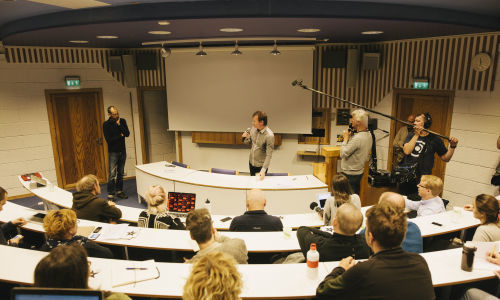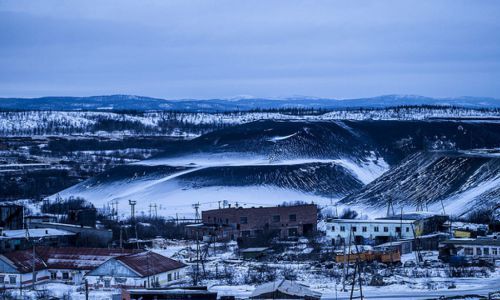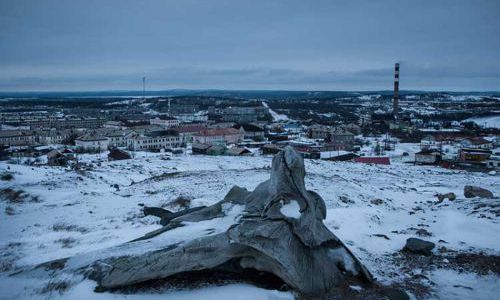Nuorti! Seven Senses on the Land
Marko Peljhan & Matthew Biederman
Our senses guide us through the world. Combined with experience, knowledge and openness we can begin to develop new relationships and understandings of Earth systems and our collective embedded positions within.

The following was the brief around which this group gathered and conducted its investigations:
Complex ecological networked systems can be observed, read and navigated by employing Intuition and Technology. Artists, hunters and herders, tactical media workers and scientists will be joining forces to develop, deploy, use and question enhanced sensing systems and methods. This could lead to new and surprising insights and construction of semantic territories, in which the gaze and measurement become knowledges and are projected back onto the land in order to structure completely new vectors of meaning, understanding and orientation. Our senses guide us through the world. Combined with experience, knowledge and openness we can begin to develop new relationships and understandings of Earth systems and our collective embedded positions within. We will develop the ability to augment these senses through Technology and Intuition, engaging Local and Traditional knowledges, Art, Engineering and Sciences. This group will explore the machinic in the ecologies and the animals in the machines.
This group was heterogeneous in many different dimensions, composed of hunters, poets, artists, nomads, anthropologists, surveyors, reindeer herders, programmers and coders, pilots, tactical media operators, tactical geographers, photographers...The few days of investigating and reading the Land resulted in a series of responses, that will yield future work, both in the framework of the current activities of the group's members as well as new joint future collaborations. SSOTL concentrated on the understanding of the Land; (Land here is intentionally capitalized, so it somehow captures all the Land has to offer – weather, flora and fauna, narratives, history and time).
We tried to enhance all the rest of the traditional senses with Intuition and Technology. Due to the time limitations, we have decided to travel and concentrate on two vectors around the Saana fell, which dominates and dictates many of the possible and potential Land connected research dimensions in this area of Lapland i.e. 290deg - 100deg.
STONE, FREEDOM, MEMORY, NOISE, MOLTEN, STRONG, WIND, TRAIL MAKING, GRAZING, TRUST, AIR, CONNECTIONS, LIGHT, WIND, DOWNHILL, EAGLE, YELLOW, LEMMING, BALANCE, COLOUR, SLEEPING, COLOURS, ORANGE, BORDER, SMILE, RUSKA, STONE, YELLOW, TEXTURE, SOFT, FLOATING, SEEING, LAND, RAJA, REFLECTION, NORTH, ENERGIZED, COMFORT.
This was the response to the SSOTL group report by the participants as well as members of the other groups.
We found out, that being on the Land, sensing the Land, can lead to as many different perspectives as there are people. Can the use of technologies, both old and new, traditional and modern, augment our senses and lead to deeper understandings of the Land, its systems and our relationships to it?
However, to paraphrase Virillio, with each new technology, come new tragedies. For instance, take the technology of the fence, a border between Norway and Finland, which was discussed very much within our group. A simple technology, yes, but in fact one that has prevented the natural migration and movement of reindeer herds through the seasons. Similarly, we also visited what was left of an ancient Sami stone fence near the Didno River in what is today Norway that was built by reindeer herders in order to separate their respective herds from one another. A different approach with a very different functionality and result.
Time-disappearing
After a few weeks, Leena wrote:
“Oula is still thinking some answers to some of your questions. The process is going on. Oula also told about his memory while having his campfire up on the hills during the lunch. His campfire was made about similar kind of dry willow, as we had in Didno-river in Norway with you. He was next to the similar river where we were. He was watching around, and looking for all of you. Then he started to think what is the time and recognize that the time is very much like as disappearing. He's still thinking that.“
This Didno River Sami fence, and its design is a highly developed tool that has been refined through time in conjunction with understanding nature and the particular animal. The fence was built with a specific intent to allow for a fluid and sustainable form of husbandry, bringing man, animals and nature together. It still stands, but it is a site rather than a border. The border fence is precisely the opposite – it is built as a separator, in order to define ownership of a system which cannot be owned. It prevents the free movement of animals and man, it destroyed ages old North/South migration patterns through its construction.
Many discussions, or really one long discussion was carried on over several days as the group tried to untangle the fact that the Norway/Finland border fence was a major problem, one that cannot be resolved simply, whereas the Norway/Sweden border just next door was open for passage of reindeer herds throughout the seasons. No simple “southern” understanding and typical undoing can of course solve this issue, since the traditional patterns have changed because of the fence and now new, adapted understandings of the Land and reindeer husbandry exist.
Sensing remotely
Since the fence seemed to be an interesting focal topic, we decided to approach it from another viewpoint quite literally. We flew an unmanned aerial vehicle equipped with the ability to take georeferenced orthophotos to create ortho-mosaics and maps of the Land over different areas defined and sculpted by the fence as well as over historical dwelling sites.

While processing and doing heavy statistical analysis of the collected data is time consuming, we were able to quite quickly observe the environment on either side of the fence and noticed immediately a difference between the Norwegian side and the Finnish side of the fence and noted that the Finnish side was more overgrazed than Norway. We assume this is probably due to the fact that the herds on the Norwegian side are able to continue their natural migration northward during the summer months. We also imagine that using these data sets could potentially be of use if there were to begin some sort of negotiations around the border, not that it would solve the competitive use among families but potentially there is a use for this in a larger governmental and geopolitical framework.
Of course this fact is already well known by the local people who are herding and utilizing the land in this way, however by using these larger scale technological augmentations to vision – we can quantify just how damaging the interventions are to the Land through proper analysis and quantification.
Remote sensing techniques can also lead to completely new insights in terms of reading and mapping the cultural Landscapes of the present and past and detecting changes over shorter and very long periods of time and we have decided we will conduct another, much more intensive campaign together with our Sami colleagues in the near future.

This blog post is a reflection on Field_Notes - HYBRID MATTERs that took place on 14.-20. September 2015.
Field_Notes – HYBRID MATTERs is an art&science field laboratory organized by the Finnish Society of Bioart at the Kilpisjärvi Biological Station in Lapland, Finland. The project is in search of artistic and scientific responses to converging ecologies. The local sub-Arctic ecology and environment, as well as the scientific research and infrastructure of the Kilpisjärvi Biological Station will act as fields and catalyst for the work carried out.
The team
Matthew Biederman (group host)
Matthew Biederman works across media and milieus, architectures and systems, communities and continents since 1990. He creates works that utilize light, space and sound to reflect on the intricacies of perception mediated through digital technologies through installations, screen-based work and performance. Since 2008 he is a co-author of Arctic Perspective Initiative, dedicated to augmenting traditional knowledge through new technologies for greater autonomy of the circumpolar region. His work has been featured at: Lyon Bienniale, Istanbul Design Bienniale, The Tokyo Museum of Photography, ELEKTRA, SCAPE Bienniale and CTM among others. http://www.mbiederman.com/
Marko Peljhan (group host)
Marko Peljhan is a theatre and radio director, conceptual artist and researcher. From 1994 on he has been coordinating the Makrolab project in all its dimensions. He is the co-founder of the Ljudmila digital media lab (1995) and the initiatives I-TASC (Interpolar Transnational Arts Science Constellation) and API – Arctic Perspective Initiative with Matthew Biederman. His work has been widely exhibited in numerous exhibitions worldwide. He is the recipient of several art prizes, among others the Golden Nica in the Interactive arts category for the work "polar" with Carsten Nicolai. He also works as Professor of interdisciplinary studies at the University of California Santa Barbara. He is also the artistic director of the not for profit arts organization Zavod Projekt Atol and the editor at large of the music label rx:tx. http://www.ladomir.net/
Leena Valkeapää (group host)
D.A. artist and researcher Leena Valkeapää lives in the wilderness in the northwest Lapland. Her doctoral dissertation In the Nature, a dialog with Nils-Aslak Valkeapää´s art (2011) proposed a dialogue with nature and its poets. Se has exhibited as a visual artist since (1988) and has produced public environmental artworks, including the rock wall piece Ice Veil (1999) in Turku. She wrote a regular column to Lappish newspaper Lapin Kansa during the years 2012-2014. Valkeapää is taking part of the daily works in a reindeer herding, in sami culture tradition. Leena Valkeapää works as a visiting lecture in the Department of Art in Aalto University.
Jose Marcos Perez Diaz
Jose Marcos Perez Diaz studied technical engineering and topography at the University of Las Palmas de Gran Canaria and is CEO -UAS Manager at Airdrone 3D. http://www.airdrone3d.com/en/
Charli Clark
Charli Clark is a UK artist, currently based in Espoo, Finland where she is completing her Masters in Environmental Art at Aalto University. Clark's practice is collaborative and social-specific, exploring the inter-connectivity of Earth through working alongside others to share and exchange skills and knowledge in relation to the concepts of society and consumption. Recent commissions include 'Take One Down' for AMORPH!14, Community?, MUU Gallery, Helsinki, Finland, ‘SWARM’ for BZZZ International Sound Art Festival, Harp Art Lab, Sweden and 'Catch Your Breath' for Paper Makers: Bring Science to Life through Art, Glasgow, UK. http://www.charliclark.co.uk
Stephan Dudeck
Stephan Dudeck is an anthropologist working at the Arctic Centre of the University of Lapland as a member of the ORHELIA (Oral History of Empires by Elders in the Arctic) project that collects stories from indigenous groups of the Barents regions. He finished his dissertation on the persistence of reindeer herders' lifestyles in Western Siberia at the Max Planck Institute for Social Anthropology in Halle, Germany in 2011. From 1993 to the present, he visited regularly Khanty and Nenets reindeer herders in the Russian North and Siberia. Among his interests are adaptations to technological change, visual cultures, resistance and practices of avoidance. http://stephandudeck.wordpress.com
Alia Malley
Alia Malley received her BA in Critical Studies from USC School of Cinematic Arts (1994), and her MFA in Visual Arts from University of California Riverside (2010). Her work explores representation and content, specifically in the context of landscape and cinema, photography, human geography and place. She was the recipient of the Merck Award (2010), and selected for the Farm Foundation’s Arctic Circle residency in Svalbard (2013). Her work is included in the permanent collection of the Los Angeles County Museum of Art. Her project Captains of the Dead Sea will be presented in a solo exhibition at SLOAN Projects, Los Angeles, in October 2015. She lives and works in Los Angeles.
Netta Norro
Netta Norro is an international based arts manager, cultural producer and communicator. She is the coordinator for Changing Weathers project which Field_Notes HYBRID MATTERs is part of. Norro holds a BA in Arts Management and MA in Arts. She has been working extensively in culture and in arts with production and coordination and with communications in culture and in btob. Recent years she has also worked with development and internationalization of creative organizations. She is a qualified process and online facilitator. She used to have love for factory buildings and cargo ships but these days she is more into humanity and nature.
Avner Peled
Avner started off as a software developer and IT security specialist in the Israeli military. Later he moved on to game development, while pursuing academic studies in Neurobiology and Philosophy of consciousness in Tel Aviv university - Including one year in Waseda university, Tokyo. For the past 3 years he has been working part-time in a music industry start-up, using the spare time for New Media art, 'Making' and volunteering within the refugee community in Tel Aviv. Now he's entering the next step – A Master's in New Media art at Media Lab Helsinki. http://avner.js.org
Judith van der Elst
Judith van der Elst is an anthropologist/archaeologist specialized in humanistic approaches in the geosciences. She received her PhD from the University of New Mexico for research testing the limitations of spatial information systems for representing and understanding the diversity in human spatial thinking, using the concept of cognitive landscapes. Her work focuses on understanding multimodal perception of the land, through merging embodied learning, sensing technologies, and ubiquitous computing within a biosemiotic framework. Leading a semi-nomadic lifestyle she explores this approach through transdisciplinary collaborations, among others with Urbino University, Aalto Media Lab: Systems of Representation, and Machine Wilderness project (Theun Karelse).
From the Book
-
Dark Ecological Chocolate
Timothy Morton
Dark ecology starts off dark as in depressing. Then it becomes dark as in mysterious. Then it ends dark as in sweet dark chocolate. In this lecture I'm going to provide an experiential map of dark...
-
Nikel — The City as a Material
An interview with Tatjana Gorbachewskaja
Tatjana Gorbachewskaja is an architect who grew up in the Russian town Nikel, located in the far North near the Russian border with Norway. For Dark Ecology Project she researched the materials of...
-
What Is Dark Ecology?
Timothy Morton
In this essay, which draws on his book Dark Ecology, For a Logic of Coexistence, Timothy Morton — who originally coined the term dark ecology — explains what dark ecology is. He also argues how...


